Lipari: Pumice and ObsidianLipari, the economic center of the Eolian islands, is well known for the occurrence of massive pumice deposits and obsidian flows. Obsidian was exported already in neolithic times and was used in continental Europe in manufacturing knives, arrowheads etc. These days the only volcanic export product is pumice. |
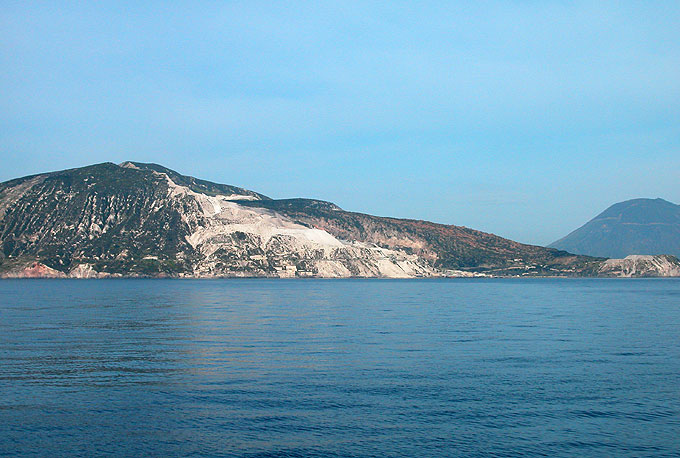 Pumice quarry and, on the right horizon, the large obsidian flow. While obsidian was an "export commodity" from Lipari in the stone age (arrowheads etc.) today pumice is the only commercial mineral product. | 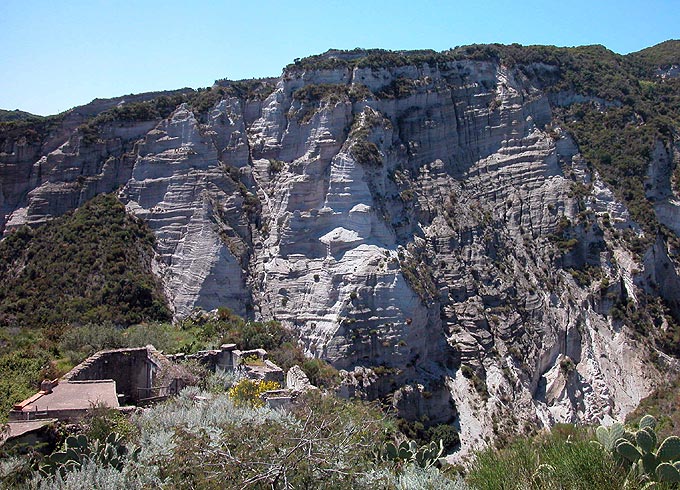 Thousands of individual layers of pumice representing an equal number of eruptive phases form a massive deposit here exposed in a canyon above Canneto. | 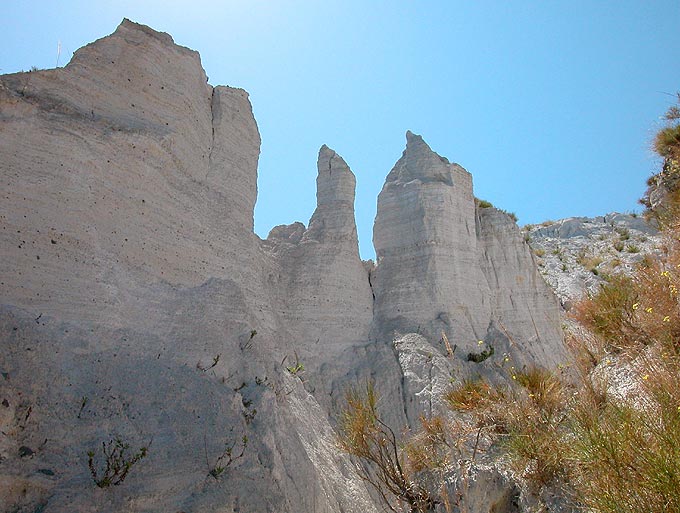 Pumice is easily eroded and can form towers and spires. Note stratification. In the mines pumice is sorted by grain size. Italpomice gives details regarding the use and properties of pumice. | 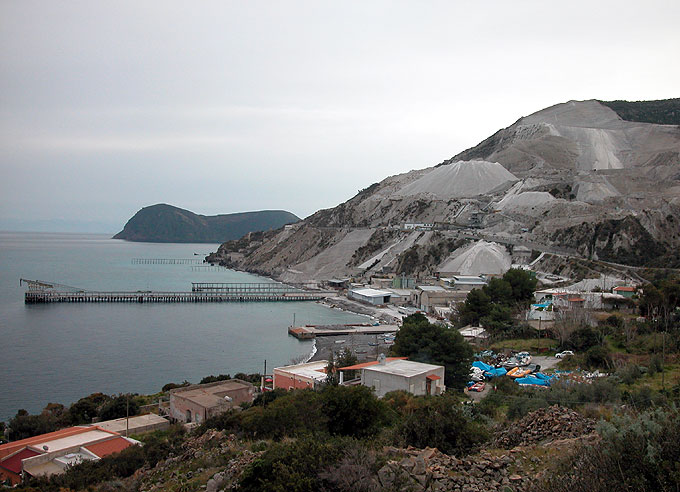 The eastern pumice quarry as seen from the north. The two pumice mining companies (Pumice Pumex S.p.A. Quarries and Sta Siciliana per I'Industria ed il Commercio della Pomice) sold a total of 800'000 tons in 2001. |
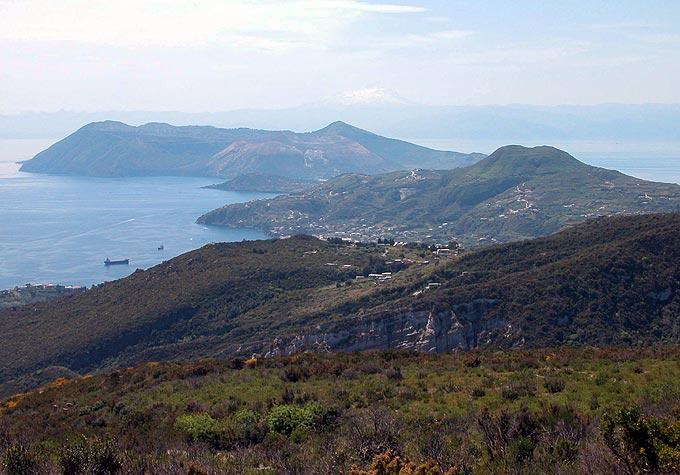 Monte Pelato offers a splendid view over southern Lipari, Vulcano and - on a clear day like this - Mount Etna (with snow, center background). |  Monte Pelato is the highest point of the large crater from which the obsidian lava (brown, behind the white roads) flowed towards the sea. |  Marco Fulle surveys a huge block of intensely fractured obsidian in the lower part of the flow. The section he looks at is shown as close-up on the right. |  Here the obsidian fractured into blocks. The gaps between them were filled by bluish "obsidian foam". One Euro coin for scale. |
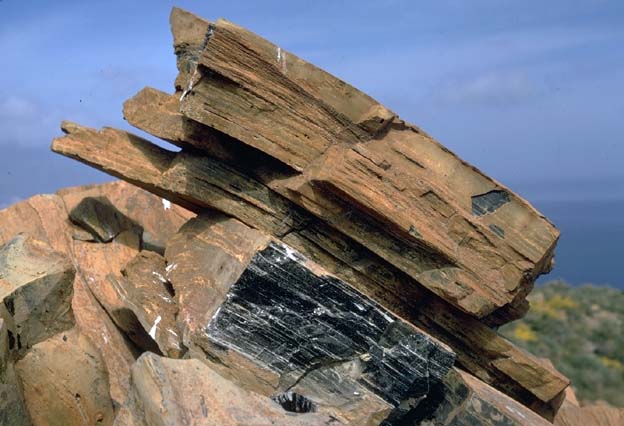 Weathered obsidian looks grey or brown. The glassy black is only revealed when bits are broken off (which may be very difficult even with a big hammer...). | 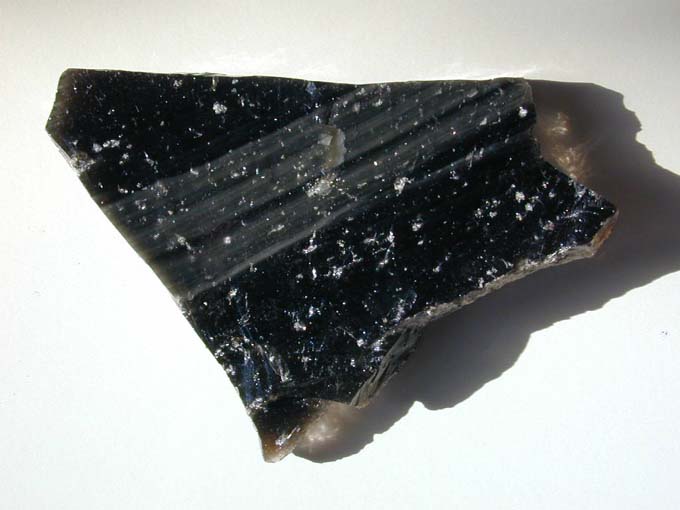 Freshly cut sample of obsidian, about 6cm long. Typically this piece shows banding caused by internal shear and micro-bubbles formed during the flow process. | 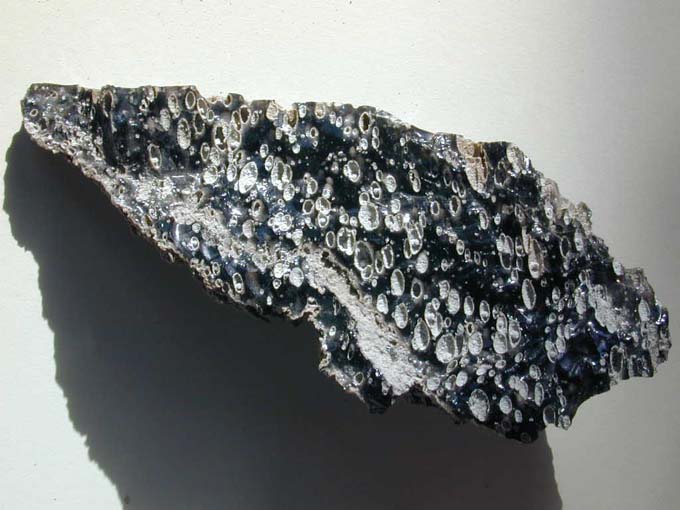 Some obsidian contains much larger bubbles several millimetres in size. Due to shear they were deformed from an originally spherical to an elliptical shape. Sample length about 8cm. | 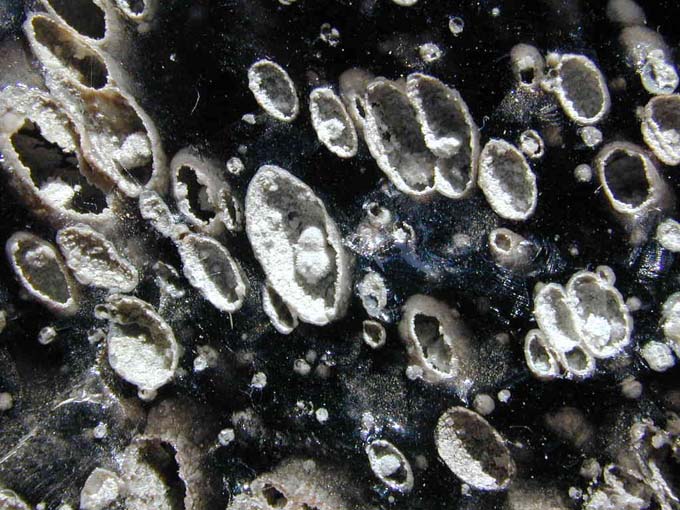 Enlarged section from the sample shown on the left. Note that many bubbles contain small white spherical objects, possibly radially arranged minuscule quartz crystals. |
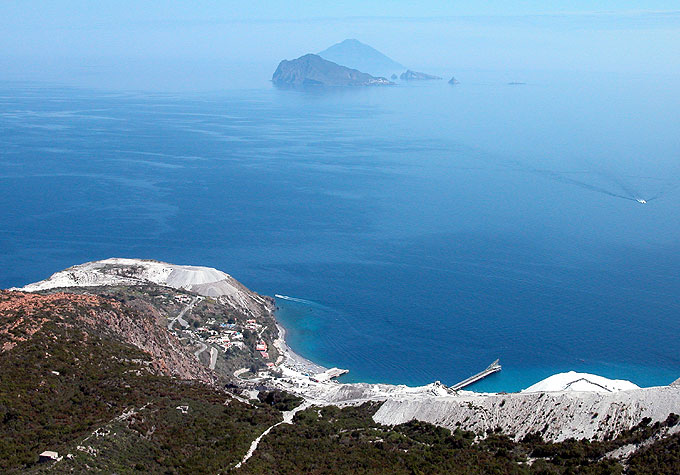 Lipari impressions (1): Snow white pumice, turquoise sea and distant Panarea and Stromboli islands. |  Lipari impressions (2): Under a grey and gloomy winter sky a rope provides a bit of lively colour. |  Lipari impressions (3): After taking on a load of pumice a cargo ships departs over a calm winter sea. | 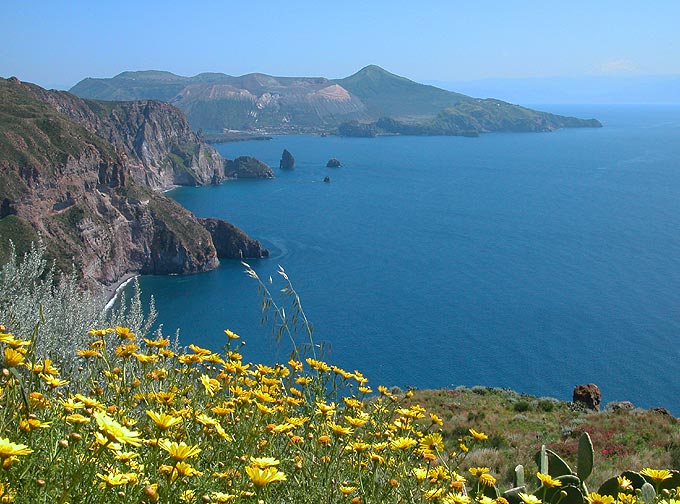 Lipari impressions (4): The view across to Vulcano, for which one needs "four eyes" (viewpoint "Quattrocchi")! |
| All photos on this page are copyright J. Alean |